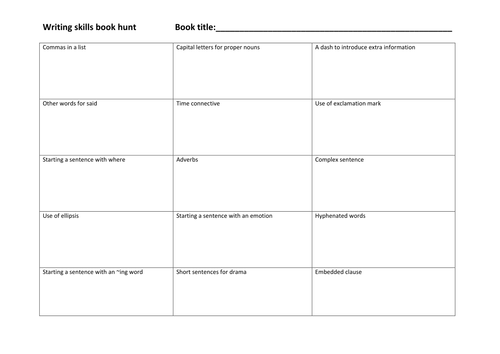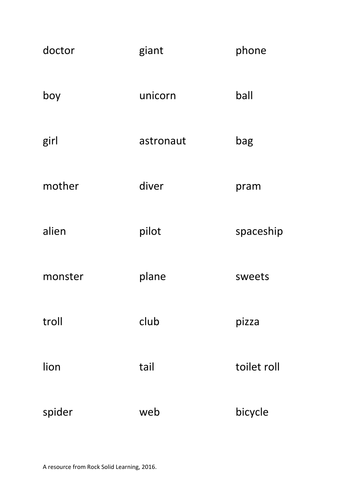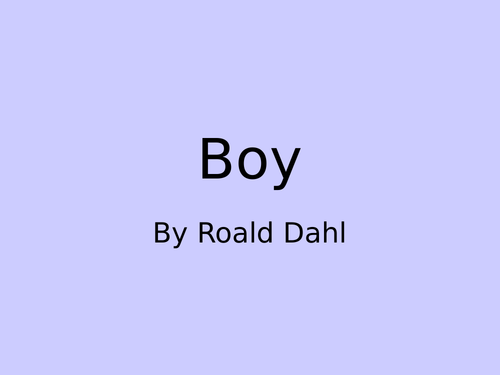46Uploads
41k+Views
16k+Downloads
English language arts

Structuring answers about writers' skills using Point, Evidence, Analysis
This resource comprises two sheets. The first shows a model answer about Sir Arthur Conan Doyle's descriptive writing skills in The Hound of the Baskervilles, beginning with a simple answer, moving to a more detailed answer and finishing with some extra detailed analysis.
The second sheet is made up of prompts for sentence starters on making a point, introducing evidence from the text and beginning to explain what it means.

Writing skills book hunt (skimming and scanning looking for key skills)
In this activity, pupils need a fiction book to hunt for examples of authors using writing skills. Writing skills needed include those such as short sentences for drama, starting sentences in different ways and using different words for 'said'. It also asks them to find examples of ellipsis, exclamation marks, proper nouns, hyphenated words and commas in lists, among other things.
For each of the skills/examples required, there is an example given on the sheet to act as a model and to remind the pupils in case they have forgotten.

Word class sorting activity
Lists of nouns, verbs, adjectives and adverbs to be sorted into the correct boxes in a table. Use one column of words each time for a SPAG starter activity.

Year 6 SPAG Quiz Competition for KS2 SATs Revision
This quiz is made up of 5 rounds with ten slides of questions per round plus a bonus question (usually a harder challenge). Answers are provided so that the quiz could be left for a supply teacher/covering TA.
Play with the whole class working independently, or in teams (it is set up to be played by 2 teams which are indicated by shapes in top corner of each slide). Each slide also has colour coding for level of difficulty and an option for winning points on each question.
Each round has a particular theme or topic: tenses, phrases and clauses, punctuation, types of words and making words (including root words, suffixes and antonyms).

Apostrophes for possession / belonging / possessive
Here we have all of the resources for a lesson on possessive apostrophes that assumes some children will know the basics already. It would be good for the first lesson *you* have taught them on it, assuming they have done it sometime last year, or as a revision lesson after a long break.
It starts with the whole class reading an article and spotting missing apostrophes before focusing in on some whiteboard work using pictures as prompts. A partner work/table group game (which could be made competitive or even silly/funny if you like!) is then followed by some written activities to go in the book. Plenary and homework provided too!

Homophones (4 activities with increasing difficulty)
Teaching homophones for an entire lesson is pretty hard work and the children get so overloaded with words that they can’t remember them all. So I created four smaller 10-20 minute activities to use as lesson starters or fillers to give children the words in smaller doses.
The first is a powerpoint, which would work best as a whole class with whiteboards. It asks if children know any different spellings for a given word and then uses pictures to support the teacher in giving definitions of the words.
The second is a matching activity (matching homophones to their definitions) that pupils could complete in pairs. These words are trickier and may require the children to use dictionaries.
The third activity is a gap fill, asking the children to choose the right homophone to complete the sentence. Again, dictionaries could be useful.
The final activity asks pupils to write their own sentences to show that they understand the different meanings of homophones. There is a points element that could help make this competitive if that’s the way you class works!
All activities meet NEW homophones; they are not repeated from previous activities.

The Midnight Gang - questions, discussions and activities by chapter
As I read through The Midnight Gang by David Walliams, I jotted down ideas of questions and activities to do with my pupils. Organised by chapter, this powerpoint has over 50 slides with questions that cover all aspects of reading comprehension. Some have short, instant answers and others could be expanded into a 20 minute class discussion. For the creative teacher, there are many ideas and questions that could easily be developed into something exciting and memorable for the children. Some activities have been indicated as potentially cross-curricular, including opportunities for art, geography, science, drama and debate.
My purpose in adding this to TES is to provide teachers with a resource they could use in class with little or no preparation. Other teachers may not want to use it directly with the children but use it as a planning aid for their own lessons.

Boy by Roald Dahl - questions, discussions and activities by chapter
Aimed at upper KS2 or KS3 readers, this resource provides a way to help students engage with the text. With 25 slides (one per chapter), it helps teachers to plan discussions and activities relating to each chapter. Some may be questions you want to ask along the way as you are reading as a class (or alternatively could be modified into comprehension task questions); other activities could be developed into a whole lesson (e.g. a piece of writing or a class debate).
There are a variety of tasks and questions around different topics and reading skills:
formal/informal language
standard/non-standard English
predictions
looking up vocabulary
author’s language choices
structural techniques such as short sentences and use of repetition
building up suspense
author’s awareness of the reader
author’s purpose in writing
This resource also aims to engage pupils in the text through:
drawing characters and settings
comparing what is recorded in the book with their own experiences
generating deeper discussion about schools, traditions and punishments
encouraging students to look up things on the internet: maps, photos, youtube clips








